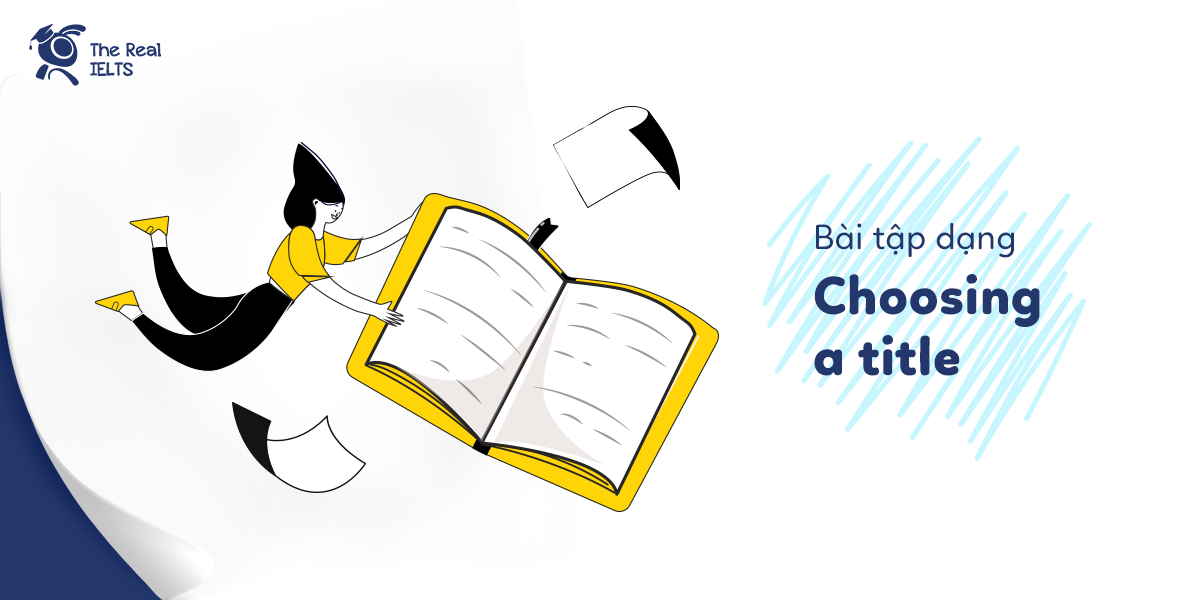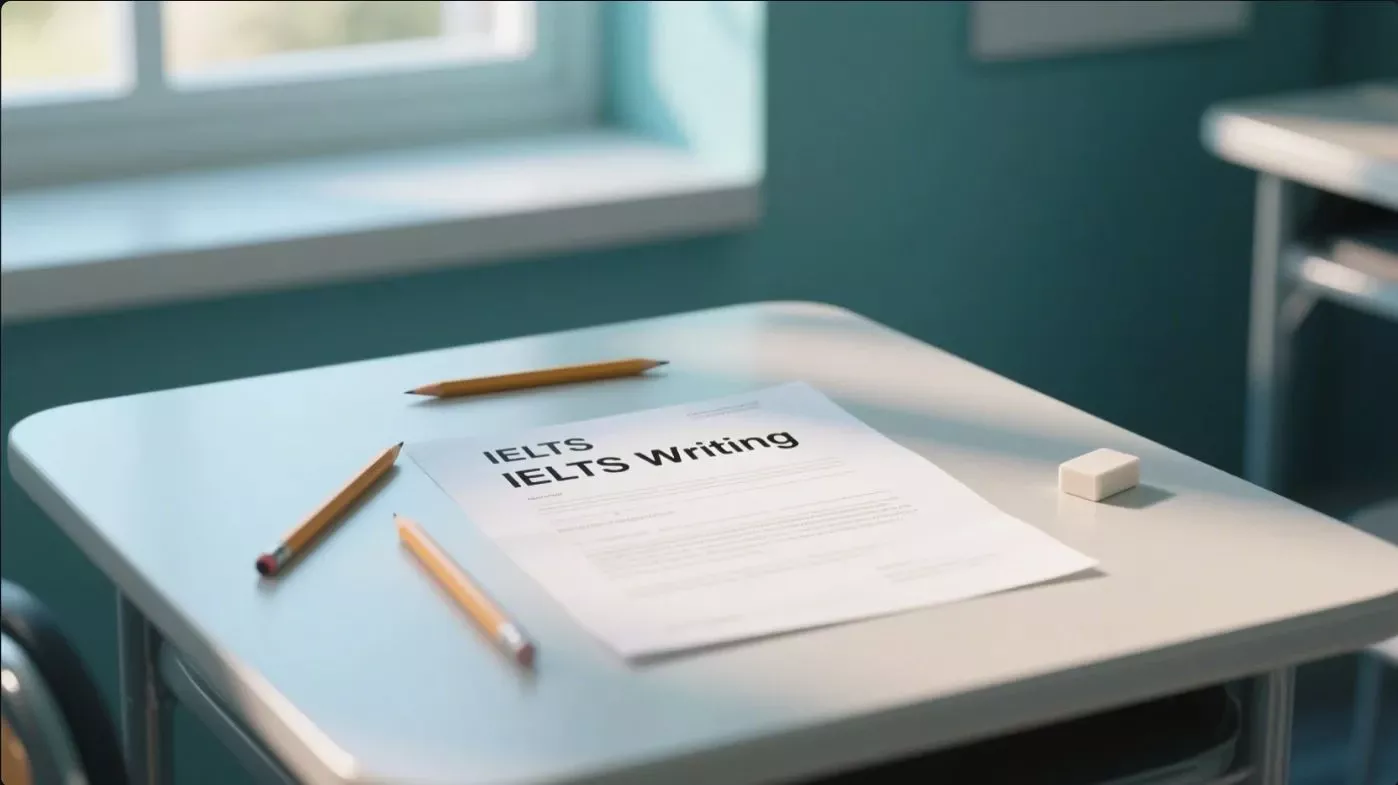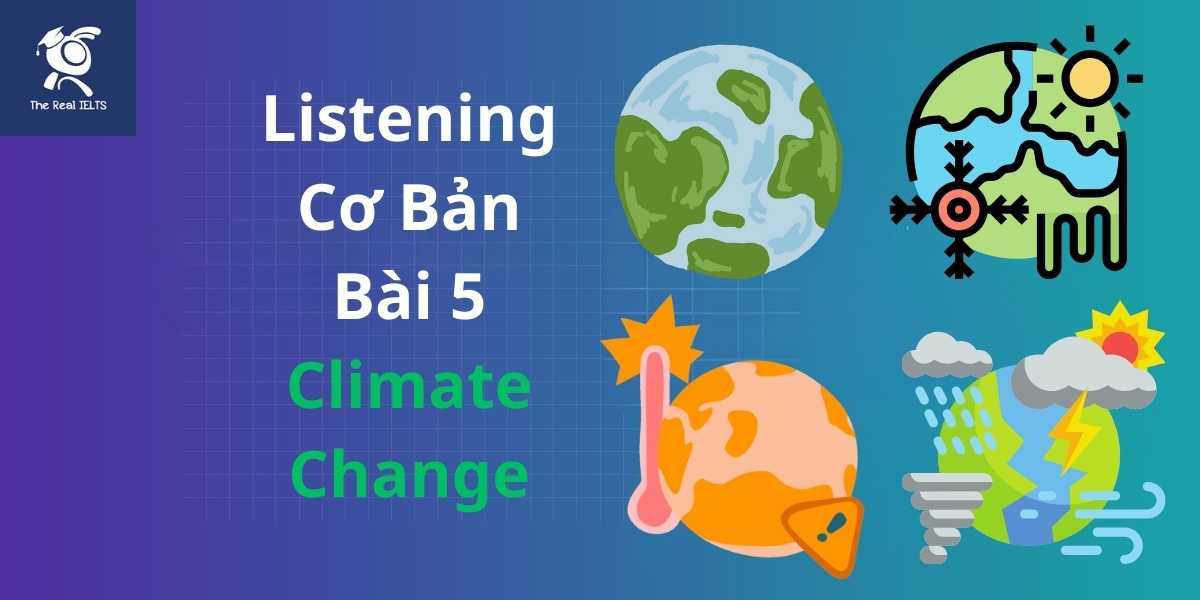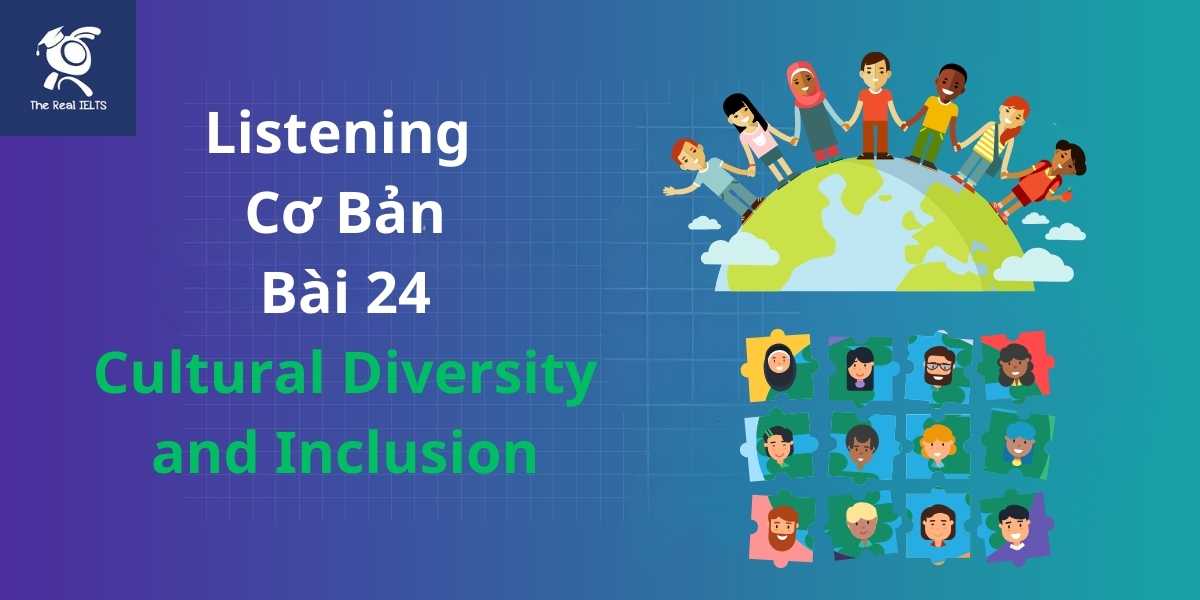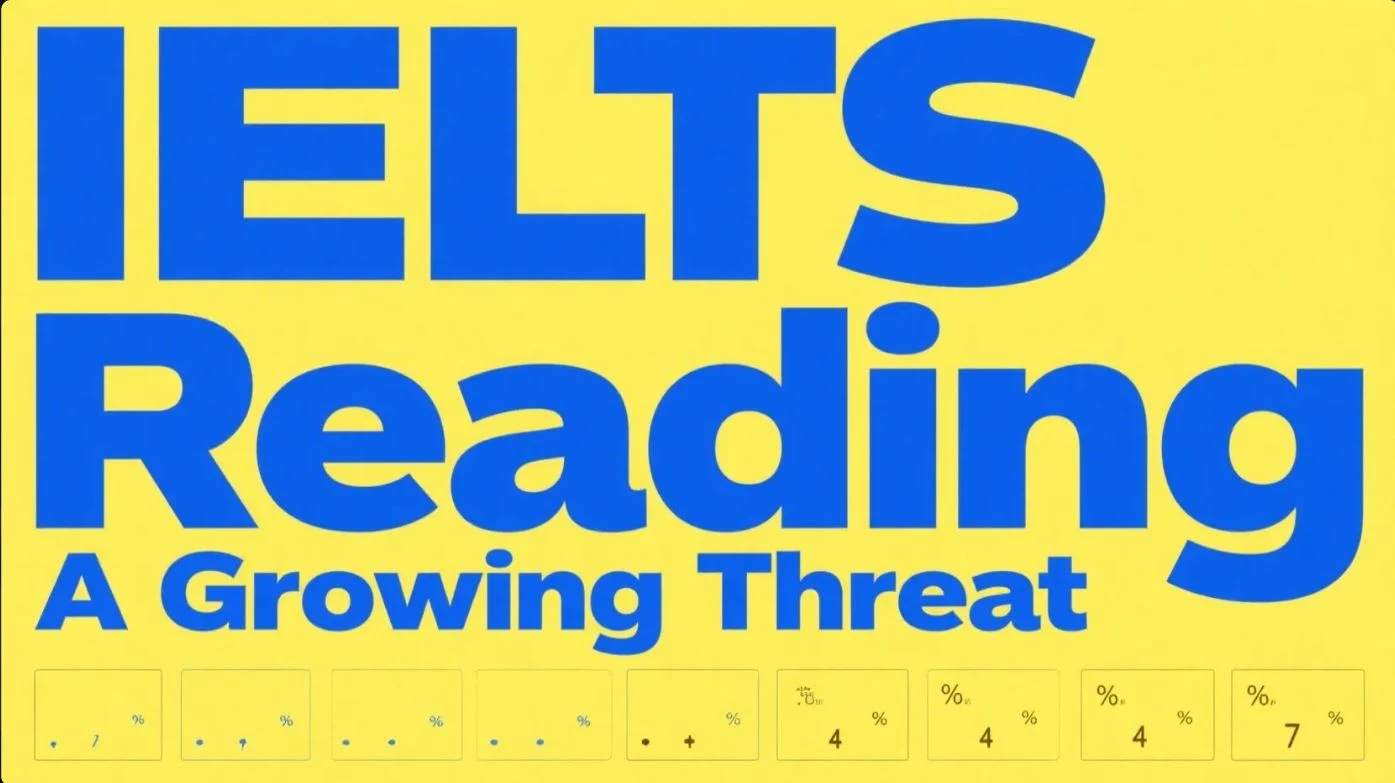Dạng bài “Choosing a title” là một trong những loại bài viết thường gặp trong phần thi IELTS Reading của kỳ thi IELTS. Trong dạng này, bạn sẽ được cung cấp một đoạn văn, đoạn hội thoại hoặc một bức tranh, và nhiệm vụ của bạn là chọn ra một tiêu đề phù hợp nhất cho nội dung đã cho.
Dưới đây là một số bí quyết giúp bạn làm bài hiệu quả trong dạng bài IELTS Reading này:
- Đọc kỹ đoạn văn, đoạn hội thoại hoặc quan sát bức tranh: Đảm bảo bạn hiểu rõ nội dung và ý chính được truyền đạt.
- Xác định ý chính: Tìm ra ý chính hoặc thông điệp chính của đoạn văn, đoạn hội thoại hoặc bức tranh.
- Sử dụng từ ngữ và ngữ pháp phù hợp: Chọn từ và cụm từ mô tả hoặc truyền đạt ý chính một cách rõ ràng và chính xác.
- Tập trung vào cảm xúc hoặc thông điệp: Chọn một tiêu đề mà có thể kích thích sự quan tâm hoặc tò mò của người đọc, hoặc phản ánh đúng nội dung của đoạn văn, đoạn hội thoại hoặc bức tranh.
- Kiểm tra lại: Sau khi đã chọn tiêu đề, hãy kiểm tra lại để đảm bảo rằng nó phản ánh đúng ý chính của đoạn văn, đoạn hội thoại hoặc bức tranh.
Ví dụ:
Nếu bạn được cung cấp một đoạn văn mô tả một bức tranh về một ngôi làng yên bình giữa núi rừng, bạn có thể chọn một tiêu đề như “Tranh ảnh của một ngôi làng bình yên” hoặc “Sự yên bình ẩn sâu trong núi rừng”.
Nhớ rằng, việc chọn tiêu đề phải dựa trên sự hiểu biết của bạn về ngôn ngữ, văn hóa tiếng Anh và thông điệp mà bạn muốn truyền đạt. Hãy sử dụng thời gian có để suy nghĩ kỹ lưỡng và chọn ra tiêu đề phù hợp nhất.
Phần bài tập
Choosing a Title Questions
- Read the following passage carefully.
Throughout history, humans have been fascinated by the concept of time. From the earliest civilizations to modern society, time has been a crucial element shaping human activities and perceptions. Timekeeping devices, such as sundials and hourglasses, evolved over centuries, reflecting humanity’s increasing need for precision and organization. In the modern era, atomic clocks have become the standard for measuring time, showcasing the remarkable advancements in science and technology.
a) “The Evolution of Timekeeping”
b) “From Sundials to Atomic Clocks”
c) “The Fascination with Time”
d) “Human Perception of Time”
2. Read the passage below carefully.
Climate change is one of the most pressing issues of our time, posing significant threats to ecosystems and human societies worldwide. Rising global temperatures, melting ice caps, and extreme weather events are all consequences of human activities, primarily the burning of fossil fuels. Urgent action is needed to mitigate the impacts of climate change and transition to sustainable energy sources to ensure a livable planet for future generations.
a) “The Global Threat of Climate Change”
b) “Human Impact on the Environment”
c) “Addressing Climate Change”
d) “The Urgency of Sustainable Development”
3. Consider the following passage.
The internet has revolutionized the way people communicate, access information, and conduct business. Social media platforms enable individuals to connect with others globally, breaking down geographical barriers. E-commerce has transformed the retail industry, offering convenience and accessibility to consumers. However, the internet also raises concerns about privacy, cybersecurity, and digital divide, highlighting the need for responsible usage and regulation.
a) “The Digital Age: A Double-Edged Sword”
b) “The Internet’s Impact on Society”
c) “Global Connectivity in the Digital Era”
d) “Navigating the Challenges of Online Communication”
4. Review the passage below.
Education plays a pivotal role in shaping individuals and societies, equipping people with knowledge and skills essential for personal and professional development. Access to quality education is a fundamental human right, yet disparities persist globally, particularly in marginalized communities. Efforts to promote inclusive and equitable education are crucial for fostering social mobility and achieving sustainable development goals.
a) “The Importance of Education”
b) “Promoting Access to Education”
c) “Education: A Catalyst for Change”
d) “Achieving Educational Equity”
Đáp án
- c) “The Fascination with Time”
- a) “The Global Threat of Climate Change”
- a) “The Digital Age: A Double-Edged Sword”
- b) “Promoting Access to Education”
5 .Read the following passage carefully.
Urbanization is a defining feature of the modern era, with more than half of the world’s population now living in cities. While urbanization brings opportunities for economic growth and cultural exchange, it also poses challenges such as overcrowding, pollution, and inadequate infrastructure. Sustainable urban planning is essential to create livable cities that prioritize environmental conservation, social inclusivity, and economic prosperity.
a) “The Rise of Urban Centers”
b) “Challenges and Opportunities of Urban Living”
c) “Creating Sustainable Cities”
d) “Navigating Urbanization Trends”
6. Read the passage below carefully.
The phenomenon of globalization has reshaped economies, cultures, and societies around the world. Increased interconnectedness through trade, communication, and travel has led to a more interdependent global community. While globalization has brought benefits such as access to new markets and cultural exchange, it has also sparked debates over issues like income inequality, cultural homogenization, and loss of local identity.
a) “The Globalization Paradox”
b) “Embracing Global Interconnectedness”
c) “The Impacts of Globalization”
d) “Navigating the Complexities of Global Integration”
7. Consider the following passage.
Mental health awareness has gained prominence in recent years, shedding light on the prevalence of mental illnesses and the importance of destigmatizing them. Mental health conditions, ranging from depression and anxiety to schizophrenia, affect individuals of all ages and backgrounds. Access to mental health services and support networks is essential for promoting well-being and resilience in communities worldwide.
a) “Breaking the Silence on Mental Health”
b) “Understanding Mental Illness”
c) “Prioritizing Mental Well-being”
d) “The Road to Mental Health Advocacy”
8. Review the passage below.
Technological advancements have revolutionized various aspects of human life, from communication and transportation to healthcare and entertainment. Innovations such as artificial intelligence, renewable energy, and biotechnology hold the promise of addressing pressing global challenges. However, concerns about the ethical implications, job displacement, and digital divide accompany these technological breakthroughs.
a) “The Technological Revolution”
b) “Embracing Innovation in the Digital Age”
c) “Navigating the Ethical Landscape of Technology”
d) “The Impact of Technological Progress”
9. Read the following passage carefully.
Gender equality remains an elusive goal despite progress in many parts of the world. Women and girls continue to face barriers to education, employment, and political participation, limiting their opportunities for advancement. Achieving gender equality requires concerted efforts to challenge stereotypes, eliminate discriminatory practices, and empower women to fully participate in all spheres of society.
a) “Empowering Women for Change”
b) “The Pursuit of Gender Equality”
c) “Overcoming Gender Barriers”
d) “Toward Gender Equity”
10. Consider the following passage.
Consumerism has become a dominant force shaping contemporary societies, driving economic growth but also generating environmental degradation and social inequalities. The relentless pursuit of material possessions often leads to overconsumption and waste, exacerbating resource depletion and pollution. Sustainable consumption practices, characterized by conscious choices and responsible behaviors, are crucial for fostering a more balanced and equitable world.
a) “The Pitfalls of Consumer Culture”
b) “Rethinking Consumption Patterns”
c) “Toward Sustainable Living”
d) “Navigating the Complexities of Consumerism”
Đáp án:
- c) “Creating Sustainable Cities”
- c) “The Impacts of Globalization”
- a) “Breaking the Silence on Mental Health”
- a) “The Technological Revolution”
- b) “The Pursuit of Gender Equality”
- c) “Toward Sustainable Living”
Đọc thêm bài viết: 50 câu luyện tập IELTS Reading dạng True/False/Not Given – Yes/No/Not Given.


